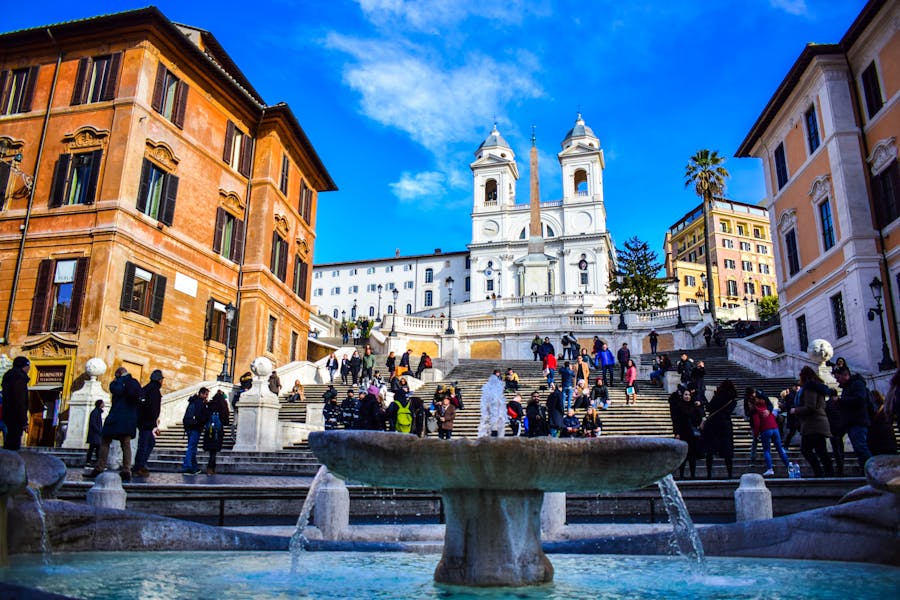European immigration policy has undergone significant changes recently, most notably with the implementation of the EU New Pact on Migration and Asylum (NPMA) in December 2023.
This comprehensive pact aims to create a more streamlined and standardized approach to managing migration across the European Union. This begs the question; Can I immigrate to Europe under the New Pact on Migration and Asylum?

The EU’s New Pact on Migration and Asylum doesn’t directly grant immigration rights. It focuses on creating a more standardized system for handling asylum applications and burden sharing among member states. Individual EU countries still determine their own immigration policies and eligibility criteria.
While the NPMA doesn’t directly grant immigration rights, it significantly impacts the asylum process and establishes a framework for fairer burden sharing among member states.
Understanding the EU New Pact on Migration and Asylum (NPMA)
The NPM introduces several key changes, with potential implications for both asylum seekers and EU member states; here are some key changes and implications:
- Faster Processing: The pact emphasizes quicker evaluations of asylum claims, aiming to reduce application waiting times. This could lead to swifter decisions and shorter stays in reception facilities.
- Standardized Procedures: EU countries are working towards a more uniform system for handling asylum applications. This includes establishing common standards for conducting interviews, assessing eligibility, and issuing decisions. While the overall process may vary slightly between countries, it should become more consistent and predictable.
- Relocation Mechanism: A solidarity mechanism based on a quota system is being developed to redistribute asylum seekers among member states. This aims to alleviate the burden on countries disproportionately affected by migration flows and ensure a more equitable distribution of responsibilities.
Important Considerations for Potential Immigrants:

While the NPMA marks a significant shift in EU immigration policy, it’s crucial to remember that:
- National Policies Still Apply: Each EU country maintains its immigration programs and eligibility criteria. This means that even with the NPMA, individual member states have the authority to determine their specific immigration pathways and requirements. Therefore, it’s essential to research the regulations of the particular EU country you’re interested in immigrating to. These details can be found on the official government websites of each member state.
- Focus on Skilled Worker Opportunities: Many European countries offer attractive opportunities for skilled workers through various visa programs. These programs can provide a viable and potentially faster route to immigrating to Europe than seeking asylum. If your primary goal is immigration, researching skilled worker visas in your target countries is highly recommended.
Beyond the NPMA: Exploring Other Avenues for Immigration
While the EU New Pact on Migration and Asylum primarily focuses on the asylum process, it’s important to acknowledge other existing pathways for entering and residing in the European Union. Here are two notable options:
- European Refugee Resettlement Programs: The EU actively participates in refugee resettlement programs alongside the United Nations High Commissioner for Refugees (UNHCR). These programs provide safe and legal pathways for refugees identified by the UNHCR to be resettled in European countries. If you meet the specific eligibility criteria set by these programs, they may offer an alternative route to find refuge and rebuild your life in Europe.
- Skilled Worker Visas: As mentioned earlier, many EU countries offer various skilled worker visa programs. These programs are designed to attract and retain individuals with in-demand skills and qualifications necessary for their economies. If you possess relevant skills and experience, exploring skilled worker visa programs in your target countries could be a rewarding and efficient path to immigration.
The EU New Pact on Migration and Asylum: Key Changes and Implications

The NPM introduces several key changes with potential implications for both asylum seekers and EU member states:
- Faster Processing: The pact emphasizes quicker evaluations of asylum claims, aiming to reduce application waiting times. This could lead to swifter decisions and shorter stays in reception facilities.
- Standardized Procedures: EU countries are working towards a more uniform system for handling asylum applications. This includes establishing common standards for conducting interviews, assessing eligibility, and issuing decisions. While the overall process may vary slightly between countries, it should become more consistent and predictable.
- Relocation Mechanism: A solidarity mechanism based on a quota system is being developed to redistribute asylum seekers among member states. This aims to alleviate the burden on countries disproportionately affected by migration flows and ensure a more equitable distribution of responsibilities.
Finding the Right Information:
Navigating the complexities of European immigration policy can be challenging. It’s crucial to rely on credible sources for accurate and up-to-date information. Here are some helpful resources:
- The official website of the European Commission: https://www.consilium.europa.eu/en/ provides updates on EU immigration policy, including details on the NPMA.
- Individual EU country websites: Each member state has its immigration website with comprehensive information on visas, permits, and application processes. These websites are invaluable resources for researching the specific requirements of your target country.
- The UNHCR website https://www.unhcr.org/ provides information on refugee resettlement programs and other initiatives relevant to individuals seeking refuge.
FAQs: EU Immigration Policy Updates in 2024
1. Does the NPM grant me EU residency?
No, it focuses on the asylum process—research individual countries’ immigration programs for residency options.
2. Will asylum processing be faster?
The NPM aims for faster processing, but specific timelines depend on individual circumstances and workload.
3. How will the relocation mechanism work?
EU countries will share responsibility for asylum seekers based on quotas, but the specifics are still under development.
4. Can I still apply for a Skilled Worker Visa?
Yes, Skilled Worker Visa programs are unaffected by the NPM and offer an alternative immigration pathway.
5. How do I find specific visa requirements?
Each EU country has its immigration website with details on visas, permits, and application procedures. Search online for “[Country Name] Immigration Services.”
6. What role does the UNHCR play?
The UNHCR works with the EU in refugee resettlement programs, offering safe havens to vulnerable individuals.
7. Who should I consult for guidance?
A qualified immigration lawyer or consultant like Globe Migrant can provide personalized advice. Book a consultation now!


